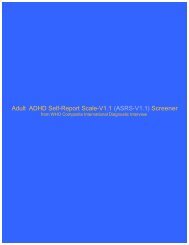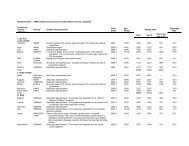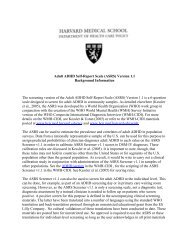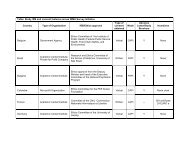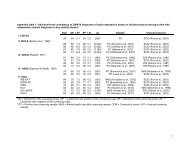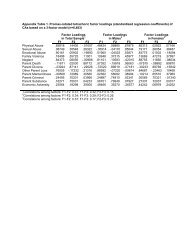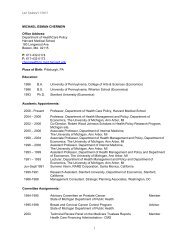Model Quality Report in Business Statistics - Harvard ...
Model Quality Report in Business Statistics - Harvard ...
Model Quality Report in Business Statistics - Harvard ...
Create successful ePaper yourself
Turn your PDF publications into a flip-book with our unique Google optimized e-Paper software.
2.2.3 Parameters<br />
The parameters which can be estimated <strong>in</strong> GES are:<br />
(a) count (an estimate of doma<strong>in</strong> size);<br />
(b) total (equations (2.1) and (2.2));<br />
(c) mean;<br />
(d) ratio(equations (2.3) and (2.4)).<br />
With<strong>in</strong> CLAN, the user needs to construct several macros to specify the estimation to be<br />
undertaken, and at this stage it is possible to <strong>in</strong>clude arbitrary rational functions of totals, so<br />
that purpose-built estimands can be constructed and their sampl<strong>in</strong>g variances calculated<br />
explicitly with<strong>in</strong> the package. GES allows only the four estimands described above, but <strong>in</strong> a<br />
similar way the variances of l<strong>in</strong>ear comb<strong>in</strong>ations can be found afterwards outside the<br />
package. In general however, this will require more expertise and effort than sett<strong>in</strong>g up the<br />
appropriate macros <strong>in</strong> CLAN. The PC-CARP documentation suggests that it estimates<br />
quantiles (with the appropriate variances) too, a facility not available <strong>in</strong> either GES or CLAN.<br />
STATA and SUDAAN have:<br />
(a) count;<br />
(b) mean;<br />
(c) total;<br />
(d) ratio;<br />
(e) regression parameters;<br />
(f) Wald statistics;<br />
(g) logistic regression parameters;<br />
(h) quantiles;<br />
and for STATA only<br />
(i) arbitrary l<strong>in</strong>ear comb<strong>in</strong>ations of parameters.<br />
Some of these are not currently widely used <strong>in</strong> bus<strong>in</strong>ess surveys, but there seems to be some<br />
development <strong>in</strong> the field of estimat<strong>in</strong>g distributions, which will make the estimation of<br />
quantiles more important, and the facility to produce estimates and variance estimates for<br />
arbitrary l<strong>in</strong>ear comb<strong>in</strong>ations of parameters can be used to assist <strong>in</strong> the estimation of<br />
variances of “complex” population parameters such as changes, <strong>in</strong>dex numbers and so on (see<br />
chapter M3).<br />
WesVar produces a similar range of statistics to STATA and SUDAAN, <strong>in</strong>clud<strong>in</strong>g arbitrary<br />
l<strong>in</strong>ear and non-l<strong>in</strong>ear comb<strong>in</strong>ations of statistics. The sampl<strong>in</strong>g variances of the non-l<strong>in</strong>ear<br />
statistics can be found because WesVar relies on replication methods.<br />
Of particular <strong>in</strong>terest <strong>in</strong> repeat<strong>in</strong>g bus<strong>in</strong>ess surveys are estimates of movement or change.<br />
Where the units are exactly common between two periods (almost never true even if the<br />
design is set up <strong>in</strong> this way because of differential non-response), then any of the packages<br />
here can be used to estimate the movement by <strong>in</strong>clud<strong>in</strong>g the responses for different periods as<br />
two survey variables. When the units are not the same, then it becomes very challeng<strong>in</strong>g to<br />
produce an appropriate estimate of change and its variance. With<strong>in</strong> CLAN this can be<br />
achieved by <strong>in</strong>clud<strong>in</strong>g the union of the two samples as the sample, and specify<strong>in</strong>g the<br />
14



